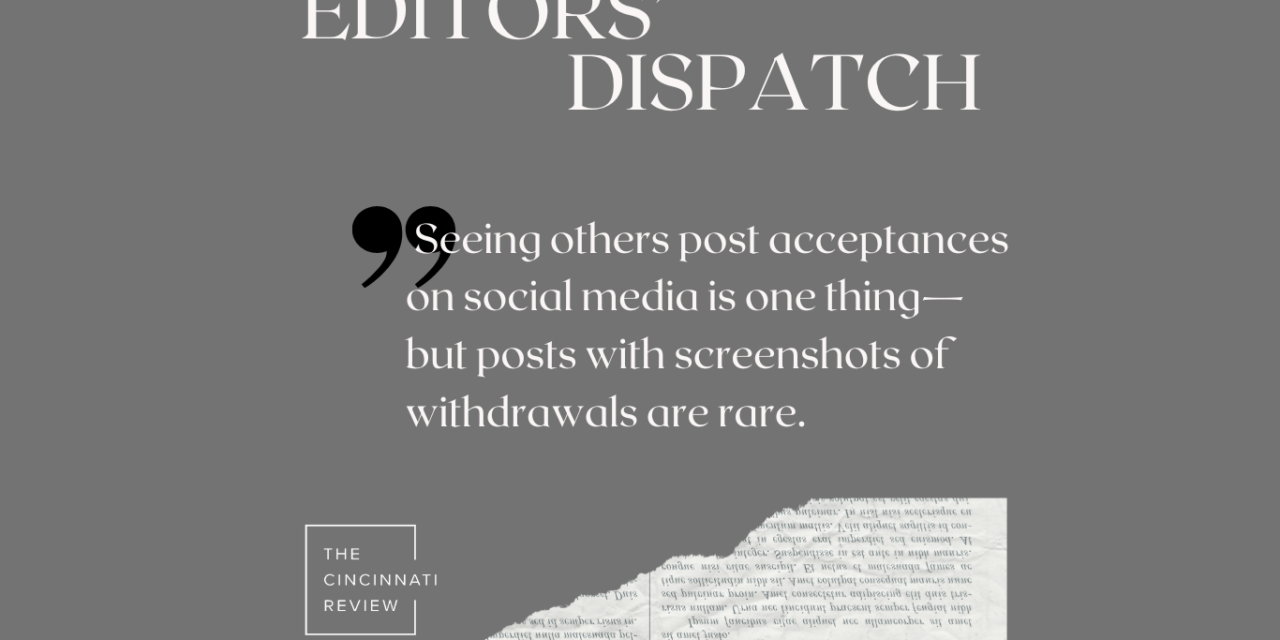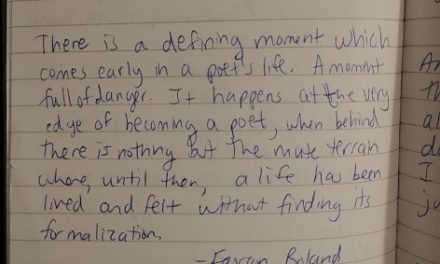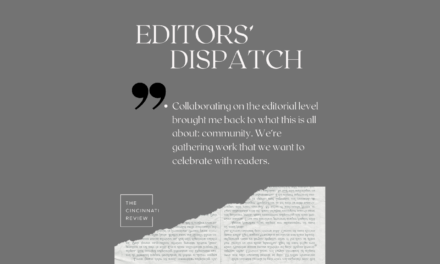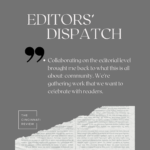
Managing Editor Lisa Ampleman: As we approach our September 1st reading period (usually one of our most popular), we wanted to remind writers to withdraw your submissions if they’re accepted elsewhere. Several times in the past year or two, we’ve accepted a piece only to hear it wasn’t available anymore. That’s not fun for us or the writer, of course.
Last year I wrote a post about submission etiquette with an emphasis on withdrawals, so I didn’t want this essay to just say the same thing all over again. We’ve been thinking about user experience as a staff more often (UX, as the cool kids put it), so I decided to write to submitters of ours who’ve had this experience and ask them about the circumstances that led to the non-acceptance acceptance.
I said: “Truly, not as criticism or correction: I’m curious why you didn’t withdraw your work before we accepted it, in case there are parts of our own system that could be finessed. What’s your process for submitting, tracking submissions, and receiving responses? What are the biggest hindrances in the submission process, technologically or otherwise?”
Here’s what we found out:
Submittable is King
And because Submittable is King, writers sometimes only withdraw work there, instead of looking at a tracking spreadsheet. One apologetic writer says, “Most of my submission data (99.9%) are listed on the Submittable platform. I went through all of those, withdrew my submission, and thought I was done.”
“I find it hard to track submissions outside Submittable (or similar platforms),” another says. “It is easier for me when all my submissions are in one place.”
Our submission manager has more limited capabilities
Writers have become used to easy partial withdrawals in Submittable for poetry or flash fiction packets, by writing a message in the relevant tab of the submission. Therefore, they often look for a similar process in our submission manager. You can withdraw a full submission in ours, which works if the piece is a story or essay—but not if it’s a single piece in a packet of several.
“I didn’t know how to withdraw a single poem from the batch of poems I submitted,” says a third submitter. “The option for withdrawal on The Cincinnati Review page was to withdraw the whole batch of poems, and I didn’t want to do that. [. . .] It was later I realized that I was supposed to send an email to withdraw a single poem. [. . .] For journals that aren’t on Submittable, I struggle a lot to withdraw a single poem from a batch of poems because there is usually no place on the submission page to leave a note of withdrawal for a single poem.”
We do say in our submission guidelines that “You may withdraw individual poems from a batch of submissions by contacting us at editors [at] cincinnatireview [dot] com or using the contact form on this website,” but that guidance isn’t within the actual Submission Manager because of formatting limitations, so I can see why it would be confusing.
A long wait is a drawback
One writer says that the biggest hindrance in the submission process is “the (sometimes) unspecified wait period between submitting and getting a response back.” They express appreciation for magazine staff who read through hundreds or thousands of submissions, but “some take as much as one or two years to reply, and I don’t mean the usual culprits.”
I suspect a long wait makes a writer feel like there’s a lack of interest on the magazine’s end, and that in turn can make it seem like additional communication about acceptances isn’t important.
Life circumstances and neurodivergence intervene
Managing the complex correspondence around submissions, possibly on multiple platforms, including email, can strain already busy writers. A submitter who replied to me says, “In the case of my Cincinnati Review submission, I had honestly lost track of the latest submission pack (the one with the acceptance) to the point of even submitting it to more journals. [. . .] I’ve had recent struggles in keeping track with life in general (due to ongoing personal issues) which have affected my time management significantly.”
“Personally, it just comes down to the fact that I work a full-time job, I have ADHD, and I am on the spectrum,” another says. “I forget. I feel overwhelmed by the many submissions I have to send to get published now in my career.”
The submission process is definitely related to executive function, which makes it harder for those who sometimes have less bandwidth for that kind of thinking. Making it as simple as possible to withdraw work would help all writers, including these.
It takes time to learn the ropes
One writer notes that they have been submitting to literary magazines for less than three years and that they’re still learning. A lot of the etiquette around magazine publication is implied rather than direct, and unless you’re in a graduate program with a professionalization class on the process, it’s not easy to know what the protocols are. Seeing others post acceptances on social media is one thing—but posts with screenshots of withdrawals are rare.
* * *
I first started sending out poetry submissions back in 2001. We did have the internet back then, of course, but no Submittable. I would print out five poems and a cover letter, sign the cover letter, write an address and put a stamp on an envelope, and also create a self-addressed, stamped envelope so I could get a reply.
If I had a poem accepted at a magazine, I might be able to email other magazines to let them know, but often I had to write and mail a letter instead.
I know that’s a bit of a “walked to school uphill both ways” kind of story, but I’m amazed, when I think back, how much has changed, and primarily mostly since around 2010, as the use of online submission managers started.
They’ve made many parts of the submission and publication process easier, and how writers participate in the system has changed. As we at The Cincinnati Review contemplate our website redesign in the next year, we’re taking comments like these into consideration. I’m thankful for our submitters who answered my query and talked about their experience.











